Shevlin Sebastian's Blog, page 82
November 6, 2016
Preserving Christian Music
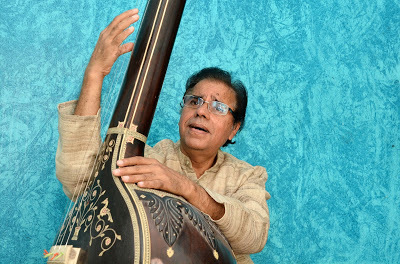
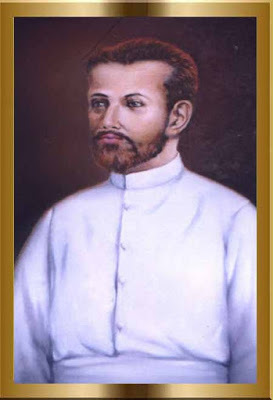
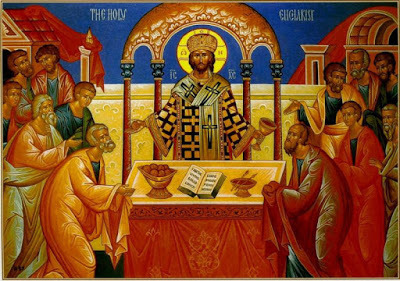 On a recent visit to Kochi, the New-York based Fr. Joseph Palackal talks about his mission to preserve the traditional Syro-Malabar music in Kerala through recordings and research articles
On a recent visit to Kochi, the New-York based Fr. Joseph Palackal talks about his mission to preserve the traditional Syro-Malabar music in Kerala through recordings and research articlesPhotos: Fr. Joseph Palackal. Photo by Ratheesh Sundaram. Arnos Pathiri; The Syro-Malabar church
By Shevlin Sebastian
At his brother’s home, in Kochi, recently, Fr. Joseph Palackal sits behind the tamburu and plays the alap in rag Asavari from the Hindustani tradition. Later he launches into the Christian epic song, ‘Puthen Pana’. His voice is soaring and melodious.
The ‘Puthen Pana’ was written by a Jesuit priest, Johann Ernst Hanxleden, from Germany, in 1721. “He was known as Arnos Pathiri,” says Fr. Joseph. “He came to Kerala as a 19-year-old, became a priest, and learnt Malayalam. The Pana is a narration of Biblical events.”
It became part of the Christian experience, because, at that time, they did not have the Bible in the local language. “It was in Syriac and only the priest knew how to read them,” says Fr. Joseph. “So, the people learned the poem by heart. My mother could narrate the entire pana in one sitting, but it would take more than two hours.”
Incidentally, Syriac is a dialect of the Aramaic language, the mother tongue of Jesus. The music came from West Asia hundreds of years ago and got mingled with the local culture.
Based at the St. Stanislaus Kostka Church, at Maspeth, New York, Fr. Joseph has been doing research, for years, on the rich Christian musical legacy in India, especially in the Syro-Malabar church of Kerala.
“The music in Indian Christianity is multi-faceted,” he says. “So, the versions in the North-East are different from what we hear in Bihar, Uttar Pradesh and Goa, which has the Portuguese influence. With the Christians in Kerala, there are two major systems: the one with the Syro Malabar Church, to which I belong, and the other with the Syrian Orthodox-Jacobite churches.”
Until the 16th century, it was songs without instruments. “But it was the Portuguese who introduced the violin, harmonium, bass drum and the bugle,” says Fr. Joseph.
But everything changed in 1962, when permission was given by the church authorities for the songs to be sung in the vernacular languages. “It was a watershed,” says Fr. Joseph. “Syriac literacy diminished, even among the priests. But the Jacobite churches retained most of the Syriac language.”
However, in the Syro Malabar church, the people resorted to film-style music. “Modern musical instruments, like the keyboard, have been added,” says Fr. Joseph. “It has lost its essence.”
So, Fr. Joseph is trying his best to preserve the memories and the melodies. Every year he comes to Kerala to meet up with people who are able to capture the melodies of the Syriac songs. “But time is running out,” he says. “Most of the stalwarts are losing their memory or passing away.”
Nevertheless, Fr. Joseph has recorded a large number of songs and put it on You Tube with notes. This is part of the Aramaic Project. Recently, he started working on a digital Encyclopedia of the Syriac Chants of the Syro Malabar Church, as well as a Directory of Christian songs in India. The priest has also written an article on the subject in the just-published Oxford Handbook of Music and World Christianities.
“I am trying to do my bit to preserve the history,” says Fr. Joseph.
(Sunday Magazine, The New Indian Express, South India and Delhi)
Published on November 06, 2016 20:49
November 4, 2016
“I am Happy Families Are Watching”
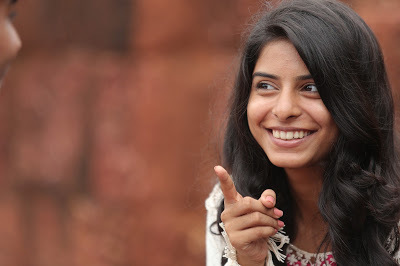
 The Kannadiga, Siddhi Mahajankatti, who grew up in Kochi, makes a mark in the Mollywood film, 'Aanandam'
The Kannadiga, Siddhi Mahajankatti, who grew up in Kochi, makes a mark in the Mollywood film, 'Aanandam' Photos: Siddhi Majankatti; the Mahajankatti family
By Shevlin Sebastian
When Siddhi Mahajankatti, 17, became the master of ceremonies at the mehendi party for the daughter of Rema Nair, her drama teacher at Vidyodaya school, Kochi, little did she realise that it would change her life.
Because when Rema posted the photo of Siddhi on Facebook, debutant director and former Vidyodaya student, Ganesh Raj, liked it.
He got in touch with Siddhi, and, after narrating the script, she agreed to play the lead role of Diya in Ganesh's film, 'Aanandam', which has now become a hit.
Today, when Siddhi goes to the mall, with her parents and younger brother, she is recognised instantly; people congratulate her, and selfies are taken.
“When I went out for dinner recently, a small girl came up and said, 'Chechi, 'Aanandam', Diya',” she says. “I felt so happy. I thought we would connect only with the school and college-going crowd, but many families are also seeing the movie.”
The film is a sweet and heart-warming look at a group of engineering students going on a four-day ‘industrial visit' to places like Hampi and Goa. Along the way, the students have fun, experience heartbreak, romantic moments and deepening friendships.
Asked whether she felt nervous going in front of the camera for the first time, Siddhi says, “I had done theatre, so I was used to acting in front of everybody.”
Siddhi represented her school at the Soorya Theatre Festival at Thiruvananthapuram, where she played the lead role in Habib Tanvir's Hindi play, 'Charandas Chor', which was translated into English.
Nevertheless, just before the first shot, at the Amal Jyothi College of Engineering, at Kanjirapally, in May, she stood in front of the camera and prayed. “The cinematographer [Anend C. Chandran] was sitting on top,” says Siddhi. “So I said, 'This is my first scene, so you better make me look good'.”
Not only did she look good, but she acted well also. Both producer Vineeth Sreenivasan and senior director Lal Jose praised her performance. Asked whether she enjoying the shooting process, Siddhi says, “I like everything about acting: the sets, costumes, and the shout of 'Roll, Camera, Action'. It can be a tiring experience. There were many sleepless nights. And you could be shooting for 48 hours at a stretch. But I enjoyed it.”
And her parents Dherendra [who acts as a head of the department in one scene] and Lakshmi are also enjoying this unexpected foray into Mollywood by their elder child.
They came to Kochi from Bangalore fifteen years ago and fell in love with the city. “Apart from Kerala's physical beauty, I like the people,” says Dherendra. “Malayalis are gentle, polite and do not have a vulgar way of talking, as it is there in other states.”
As for Lakshmi, she can read, write and speak in Malayalam. “I can also sing Malayalam songs,and my friends proudly show me off to their relatives,” she says. “They are thrilled I have become a Malayali.”
Siddhi is also a Malayali at heart. “My favourite food is red rice and avial,” she says. On holidays, she likes to go to the Marine Drive and watch the boats. As for her brother, Shrikar, 13, he says simply, “I like the big houses in Kochi.”
Meanwhile, when asked about her future plans, Siddhi says, “My priority now is to complete my BBA [Bachelor of Business Administration at the St. Joseph's College of Commerce, Bangalore]. However, if I get a good role, I might take it up.”
(Published in The New Indian Express, Kochi, Thiruvananthapuram and Kozhikode)
Published on November 04, 2016 22:22
November 2, 2016
Unexpected Blocks
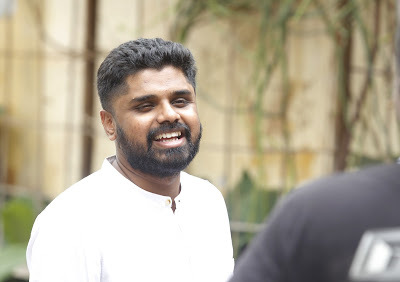
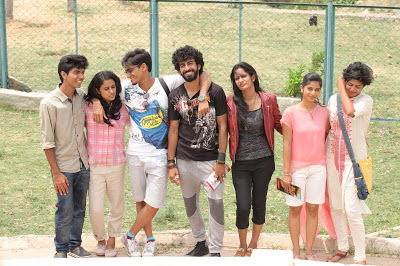 COLUMN: LOCATION DIARY
COLUMN: LOCATION DIARY Director Ganesh Raj talks about his experiences in the debut hit film, 'Anandam'Photos: Ganesh Raj; the actors of 'Anandam' By Shevlin Sebastian At 6.30 a.m., on a day in May, the young actors as well as crew of the film, 'Anandam' assembled outside the Cotigao Wildlife Sanctuary in South Goa. Director Ganesh Raj had a day's permission to shoot inside. But as a technician lifted the camera as well as the rig, from a bus, it slipped from his hand and fell to the asphalt from a height of 8 feet. “The rig was damaged beyond repair,” says Ganesh. Apart from that, the wire that connects the rig to the camera monitor was also damaged. Nevertheless, Ganesh decided to go ahead. “We had spent a lot of money to get permission, so we could not afford not to shoot something,” he says. “So we shot an entire sequence, of the hero and the heroine having a conversation on bycyles, but the cinematographer, [Anend C. Chandran], could not look into the monitor. So, he could not see what he was shooting. But I provided guidance through another monitor. Somehow we managed to get some good shots.” Thereafter, the crew had to wait for two days while a replacement rig was brought from Hyderabad. Earlier, when the team was travelling from Kochi to Hampi, they began shooting the sequence for the song, 'Dooreyo', inside the bus. While this was going on, suddenly, there was a sound of an explosion. When the crew checked, it was the camera battery which had caught fire. “Nobody knew why it happened,” says Ganesh. “It was a first. I have worked on films for the past five years and have never came across such an incident.” Anyway, the crew doused the fire, the bus was stopped, the battery was taken outside, and buried in the mud by the side of the road. “That was a bit of a shock,” says Ganesh.
“I had planned a scene where we pay homage to 'Dil Chahta Hai',” says Ganesh. “But when we arrived, I saw that the walls had broken down. I was very disappointed, because the scene in 'Anandam' would not work without it. So I decided to rewrite the scene.” So, one character says, “The place where Aamir Khan sat down has broken down.” His friend replies, “It's been 15 years. What do you expect?” It turned out to be a blessing in disguise. “I was able to make it a much better scene,” says Ganesh. “All these unexpected developments take place during shooting.” But there were planned moments, which turned out well, too. And this happened during the climax of 'Anandam', which took place on a beach at night in Goa: a New Year's Eve scene, with cloth-like lanterns. “There were 500 junior artistes and all of them had a specified job to do,” says Ganesh. “I also had 25 assistant directors to help me out when I usually have four. I had been planning for this one shot for two months.”Thanks to all the hard work, everything went perfectly. The scene was canned in the second take itself. “We were the happiest people on the planet when we were able to pull it off,” says a smiling Ganesh.
(The New Indian Express, Kochi, Thiruvananthapuram and Kozhikode)
Published on November 02, 2016 22:43
November 1, 2016
Mixing Fun With A Cause

 12-year-old Rayn Kodithodi, on a stand-up paddle, is trying to create awareness of environmental damage to rivers
12-year-old Rayn Kodithodi, on a stand-up paddle, is trying to create awareness of environmental damage to riversBy Shevlin Sebastian
On September 23, around 50 kayakers, from different parts of the country, set out, on the ‘Chaliyar River Challenge’, from the town of Nilambur. And in this group, there was one person who stood out. He was the 12yearold Rayn Kodithodi.
Unlike the others, he was on a standup paddle. Clad in a white Tshirt and blue shorts, with a black helmet, and sandals, he moved forward, using the oar, with skill and confidence.
“There were some tough moments, when I encountered some rapids,” he would say later, to this reporter at Kozhikode.
Nevertheless, Rayn coolly navigated the waters till they reached Beypore, 68 kms away, three days later. Along the way, the group picked up slippers, water bottles, and food waste wrapped in plastic packets. “The Chaliyar is a garbage dump,” says Rayn. “It is only when you go on a kayak or a standup paddle that you understand how bad the river is. People throw so many things into the river.”
It is to create awareness of this environmental harm that Rayn’s father, Kaushiq, along with his wife, Ruby, started the Jellyfish Project, based at Cheruvannur, near Kozhikode city, three years ago. “We want to tell people to avoid throwing waste into the waters,” says Kaushiq. “We are also focusing on schoolchildren so that, at least, the next generation will be sensitised about the issue.”
Their son has been sensitised. “I will never throw anything into the river,” he says.
Ruby says that for children, kayaking is the easiest and safest way to explore rivers. “And it is a far better hobby than watching TV or playing video games,” she says.
It was at age four that Kaushiq put Rayn in his first kayak at Dubai, where the former works as a sales director in an IT company. “I held my first kayak paddle at the age of six, and from that point onwards I got hooked,” says Rayn. “But after a few years when my dad got me a Stand Up Paddle board, I knew that this would be my favourite water sport activity.”
Rayn pauses and says, “Paddling is fun. It gives me joy. When I am on a standup paddle, I don’t have a care in the world. And it is always good to be in close touch with nature and water.”
But there have been some harrowing moments. Once when Rayn was in a kayak, on the Chaliyar, a 10 cms long spider fell inside the boat. Rayn became frightened. “The spider remained motionless,” says Kaushiq, who was in another kayak. “Meanwhile, I managed to calm Rayn down. We pushed the kayak to the shore. Then my son got out. We upturned the kayak and the spider calmly moved away.”
Says a smiling Rayn: “I really got scared at that time.”
But, for the most part, he is relaxed and smiling. At the conclusion of the ‘Chaliyar Challenge’, in celebration, Rayn jumped fully clothed from a boat into the water.
Like his father, Rayn has been an active campaigner. On July 23, he also took part in the ‘Catch of The Day’ programme at Cheruvannur. The ‘catch’ was the garbage, collected by a few boys.
Incidentally, the waste that is collected will be recycled. “We are working closely with a wastemanagement expert, Dr. Reena Anilkumar,” says Kaushiq. Asked whether he will do conservation efforts, like his father, when he grows up, Rayn says, “Most probably.”
(The New Indian Express, Kochi, Thiruvananthapuram and Kozhikode)
Published on November 01, 2016 22:12
Coming Back Home
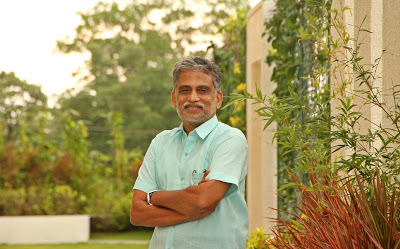 After three decades of running a successful business group in Dubai, Abdul Hasan is now planning to invest Rs 3000 crore over the next few years in Kerala. A green mall near Maradu is completed
After three decades of running a successful business group in Dubai, Abdul Hasan is now planning to invest Rs 3000 crore over the next few years in Kerala. A green mall near Maradu is completed Photo of Abdul Hasan by Albin Mathew
(The New Indian Express, Kochi and Thiruvananthapuram)
Published on November 01, 2016 01:43
October 30, 2016
The Indian Factor

 Top Qatari chef Aisha Mohamad Al-Tamimi talks about the cuisine in her country and the influences of the Indian sub-continent
Top Qatari chef Aisha Mohamad Al-Tamimi talks about the cuisine in her country and the influences of the Indian sub-continent Photos by Ratheesh Sundaram
By Shevlin Sebastian
At the Crowne Plaza, Kochi, top Qatari chef Aisha Mohamad Al-Tamimi saw something in her curry that she had not seen before. When she looked up, she saw that people were chewing on it. So she did the same. And that was when she encountered drumsticks in a curry for the first time.
“I liked the taste a lot,” she says. “And I am planning to introduce it in one of our dishes.”
Aisha had come to Kochi recently to take part in the Spice Route Culinary Festival. She is a fan of all things Indian. On her long-running and popular 'Mawaed cooking show', on Qatar TV, she has always featured Indian food. They include all kinds of curries, chappatis, parathas, and biriyani from Delhi, Mumbai and Kerala, too.
“Qatari food is very much influenced by the Indian menu,” says Aisha. “In fact, it is similar. We make biriyani in the way that you do. This happened because centuries ago, there was trade between South India and Qatar through the sea.”
So, in Qatari food, there are a lot of spices, mostly from Kerala, like cinnamon, cumin, coriander, cardamon, nutmeg, black and red pepper.
Among the most popular items in the Qatari cuisine is Marguga, a traditional curry. “Vegetables and mutton or chicken is cooked,” says Aisha. “Then we knead flour, and make a thin bread. We put the marguga paste, along with sauce, inside the folded bread, and cook it for 20 minutes, until it becomes soft. It is a full meal.”
Another item is machboos. This consists of rice, mutton, onions, and tomatoes mixed with spices. Since the people live next to the Persian Gulf, there are also several dishes which consists of tuna, crab, lobster, and shrimp. “We also use different kinds of dates, which are available locally,” says Aisha.
However, the one difference from Indian food is that, in Qatari dishes, they add a dash of sugar. So, for the breakfast dish, Balaleet, the noodles or macaroni or pasta is cooked with sugar, cinnamon, saffron, and cardamom, along with an omelette placed on top.
For another breakfast dish, Habeesa, sugar is put on the semolina. “In fact, for many dishes, we add sugar,” says Aisha.
Unfortunately, as she ponders about the present eating habits of the native Qatari population, there is nothing sweet about it. “Nowadays, for breakfast, most people are having the Western menu of scrambled eggs, bread and cornflakes, because they are all so busy and don't have the time,” she says. “This is more so among the young people. I fear that one day they will lose touch with the traditional Qatari cuisine.”
So, on weekends, Aisha cooks Qatari dishes for her family. “My children love to eat, but they are reluctant to make it themselves,” she says. “They tell me that they tend to put on weight. Instead, they opt for European and international cuisine. It breaks my heart, at times.”
(Sunday Magazine, The New Indian Express, South India and Delhi)
Published on October 30, 2016 22:58
October 26, 2016
Acting With The Superstars
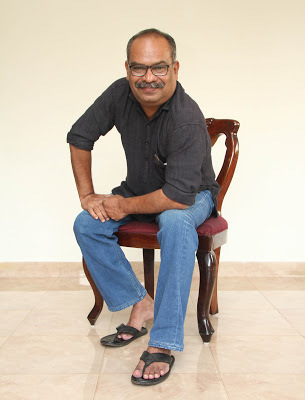
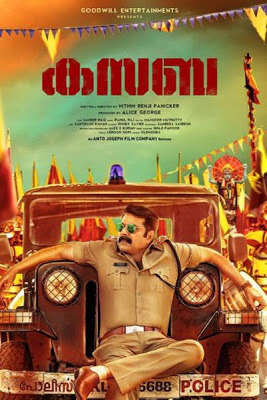
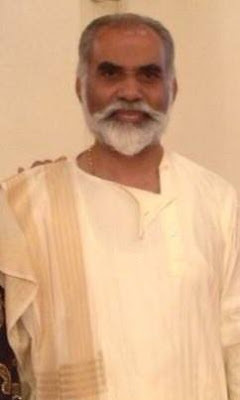 COLUMN: LOCATION DIARY Alencier Ley Lopez talks about his experiences in the films, 'Kasaba', 'Munthiri Vallikal Thalirkkumbol' and 'Monsoon Mangoes'
COLUMN: LOCATION DIARY Alencier Ley Lopez talks about his experiences in the films, 'Kasaba', 'Munthiri Vallikal Thalirkkumbol' and 'Monsoon Mangoes'Photos: Alencier Ley Lopz by Albin Mathew; the poster of 'Kasaba', the late Jose Paramus By Shevlin Sebastian One day, when Alencier Ley Lopez was acting in 'Kammatipaadam' (2016), production controller Alex called him up and said that there was a role for him in 'Kasaba', which starred superstar Mammooty. But Alencier felt nervous. He had never acted with Mammooty, or met him. “I had heard that he was a tough person,” says Alancier. “So I told Alex that I was hesitant to act with the star.” That was when Alex gave him a surprise. “He told me that it was Mammooty who insisted that I should act in 'Kasaba',” says Alencier. “So I felt encouraged.” When Alencier was leaving for Kolar, Karnataka, for the shoot, he told Dulquer, the superstar's son, who was also acting in 'Kammatipaadam', about his new role. Dulquer said, “My father and I had seen 'Maheshinte Prathikaaram' together, at our home. At that time, my father said, 'Alencier is good. We must take him for our films'.” When Alencier arrived on the set, he saw that there was a large crowd present, all waiting to get a glimpse of the superstar. Alex offered to take Alencier inside the trailer. But he said he would meet Mammooty on the set. When Mammooty entered the set, he immediately spotted Alencier. He came forward, shook his hand, and said, “My name is Mammooty.” Alencier burst out laughing because Mammooty had introduced himself. “As a result, I became relaxed immediately,” says Alencier. “He made me feel comfortable. And I had a very nice time on the sets.”
Meanwhile, Alencier got a chance to act with another superstar Mohanlal in an upcoming film, 'Munthiri vallikal thalirkkumbol'. On the sets, at Kozhikode, two months ago, he was taken by scriptwriter Sindhu Raj to a house where Mohanlal was resting.
Alencier again burst into laughter, and said, “I think there is no need to tell my name. You must be knowing it.” The superstar grinned and nodded. Alencier had a chance to laugh again when, in late, 2014, he got a call. A man said, “I am Fahadh Faasil. Do you have a passport?” Alencier replied in the affirmative. “Good,” the man said. “We will be going to America for a couple of months. You have a role in 'Monsoon Mangoes'.” But when the conversation ended, Alencier began to have doubts. 'Was it really Fahadh or an imposter who called me?' he thought. So he called back on the same number and said, “Who is this? Don't play the fool with me.” Fahaad said, “Chetta, it is really me.”
The next morning, Jose left at 5 a.m. for the set. Following his shot, he immediately left for the airport. Later, when Alencier went to the location, he was told that Jose had died of a heart attack inside the plane. He was only 61 years old. “A man came to act in a film for the first time, stayed with strangers, acted with strangers, went into the cinema world briefly, before he died,” says Alencier. “What was the meaning of this? Strange are the ways of God.”
(The New Indian Express, Kochi, Thiruvananthapuram and Kozhikode)
Published on October 26, 2016 22:37
October 24, 2016
Doing Magic On Paper
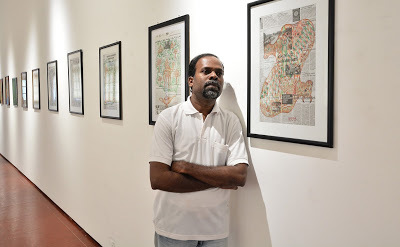
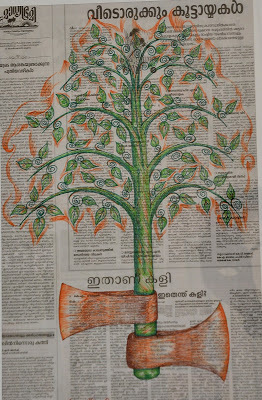 Artist Subash Kumar's exhibition was a unique one: he did pen drawings against the backdrop of newspapers
Artist Subash Kumar's exhibition was a unique one: he did pen drawings against the backdrop of newspapersPhotos by Ratheesh Sundaram
By Shevlin Sebastian
In February, 2012, Subash Kumar had gone to Gangtok, Sikkim, to attend a 10-day teacher's camp, organised by the National Council of Educational Research and Training. “There were teachers from all over India,” says Subash, a teacher fromMundakkottukurussi, near Shorannur, who is also an artist. “That was when I understood the diversity of India. We could not understand each other’s language or speech. On a whim, at different places, I would buy newspapers of the language of that place. It became a hobby.”
Thereafter, whenever friends informed him about their upcoming trips to different parts of India, he would ask them to bring back the local newspapers. Soon, he had a large collection. And it was then that he got an idea. He would do drawings on the newspapers, but with reference to the place where the newspaper was published. So, for the Malayalam newspaper, he drew a tree which has jutting-out axes at the bottom. “This is to suggest the deforestation that is taking place in Kerala,” says Subash.
“All the drawings were done with a coloured ink pen,” says Subash. “It was difficult because ink tends to spread on paper.”
After he did the drawings, on 16 newspapers, he placed it in glass frames, and held an exhibition called 'Papiro' at the Durbar Hall art gallery recently.
Many visitors expressed their appreciation of the works. And one of them, CA Vijayachandra, a retired superintendent of the Kerala Water Authority, felt compelled enough to buy one, a Radha-Krishna drawing on a newspaper from Rajasthan. “I thought the idea was unique,” he says. “So I decided to buy it.”
Chandra, a frequent visitor to art shows, says that most works – acrylic on canvas, as well as watercolours – are beyond the buying power of the middle classes. “So I was thankful that Subash quoted a price I could afford to pay,” says Chandra.
Because Chandra is a stroke victim, Subash also accompanied the former with the art work to his house in Maradu. “Subash is a simple person and I appreciated his kindness,” says Chandra.
Among the other visitors was celebrity novelist KR Meera. “She complimented me on the uniqueness of the idea,” says Subash. “She also enquired about how I managed to use ink on a newspaper.”
Asked whether there is a rising awareness of art in Kochi, Subash says, “I believe there are more upper-class people in the city. And they are not very interested in art. When I do exhibitions in Kozhikode and other parts of north Kerala, there is a stronger emotional reaction. I am sure the Kochi Bienalle has raised awareness of art, but my belief is that most of the visitors to the festival were from outside Kochi.”
Meanwhile, Subash, who has a Bachelor of Fine arts degree from the Karnataka Open University, at Mysore, is planning to hold exhibitions on his paper drawings in Kozhikode, Thiruvananthapuram and Bangalore.
(The New Indian Express, Kochi and Thiruvananthapuram)
Published on October 24, 2016 22:36
October 23, 2016
The Magic Of Numbers
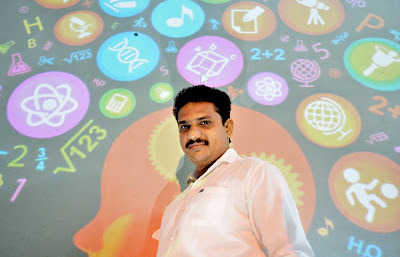
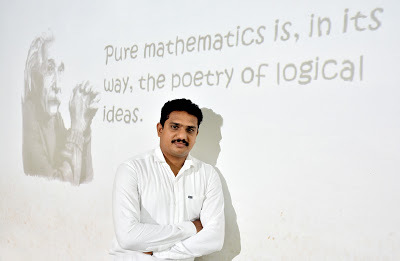 Vivek Raj is the record holder of the fastest multiplication and addition of double-digit numbers to itself in the Limca Book Of Records
Vivek Raj is the record holder of the fastest multiplication and addition of double-digit numbers to itself in the Limca Book Of RecordsPhotos by Ratheesh Sundaram
By Shevlin Sebastian
At the Sree Narayana Gurukulam College of Engineering at Kolenchery, Kerala, recently, Vivek Raj, 26, steps on stage and asks for a two-digit number from the audience. One of them says, “24.” In breathtaking speed, Vivek adds up 24 iteratively 20 times (24 + 24 = 48 + 48 = 96 + 96 = 192) till he reaches the figure of 12,582,912 in just 10 seconds.
Vivek is a mathematics whiz kid. You can give him a single or double-digit number and he can multiply or add it at high speed, to itself and reach 11 and seven digits respectively. And this fascination with numbers happened when his father gifted him a Casio calculator when he was a Class 7 student at Alleppey.
But his turning point occurred when, one day, his Class 12 English teacher Fr. Titus Chullickal, asked the students about what they could think of regarding the number 7. While some spoke about the seven colours of the rainbow, and the seven continents, Vivek multiplied 7 by itself 7 times (7 x 7 = 49 x 7 = 343). And reached a 11 digit number. “Fr. Titus told me that I had an extraordinary talent,” he says. “That was a big boost to me.”
Today, as soon as Vivek awakens, he sees digits. “You look at the clock, or the calendar, mobile phone or cars,” he says. “We see numbers all the time, but we don't pay attention to it.”
But Vivek does. As a result, he hit the spotlight, in April, when he received the certificates of the Limca Book Of Records from Chief Minister Oommen Chandy for setting two records. The first was for the fastest continuous multiplication. Vivek was given the number 67 by the examiners, and he multiplied it five times (67 x 67 = 4489 x 67 = 300763....), in a space of fifteen seconds and got a 11 digit answer. The second award was for the fastest continuous addition. He added the number 23 nineteen times in 10 seconds.
And this is no surprise because Vivek is constantly practicing his skills. He says that students should also learn to do this, because it will be of benefit during competitive exams. “In an exam, the maximum time to answer a math problem is 56 seconds,” says this mechanical engineering graduate. “In that period, we have to read the question, find the solution and write it. But if your calculation is fast, you can reduce the time needed, and devote more time to the other questions.”
Meanwhile, Vivek is trying to spread the love of the subject through his ‘Mathemagics’ show. “I have performed in many schools and colleges in Kerala,” he says. “And the most amusing moment is when I ask students for a two-digit number, they will invariably say 99, because they think it is a very difficult number to multiply. But, for me, it is child’s play.”
(Sunday Magazine, The New Indian Express, South India and Delhi)
Published on October 23, 2016 22:22
October 20, 2016
Back To The 'Spotlight'
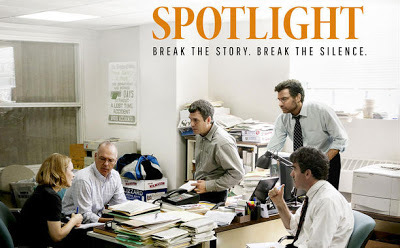
 The Boston Globe investigative reporter Michael Rezendes talks about 'Spotlight', the Oscar award-winning film, about child sex abuse by Catholic priests, which is being premiered on Sony TV this Sunday
The Boston Globe investigative reporter Michael Rezendes talks about 'Spotlight', the Oscar award-winning film, about child sex abuse by Catholic priests, which is being premiered on Sony TV this SundayPhotos: Mark Ruffalo and Michael Rezendes; the poster of the film
The film focused on the five-month investigation, by the 'Spotlight' team of the Boston Globe, into the child sex abuse by Catholic priests in Massachusetts, over several years. The team included Michael, Walter Robinson (editor of the 'Spotlight' team), Sacha Pfeiffer, Ben Bradlee Jr. and Matt Carroll. It won the group the 2003 Pulitzer Prize for Public Service. “We are grateful that our editor Marty Barron pushed us to find out the truth,” says Michael. “Without Marty, none of this would have happened.” Asked the reasons behind the film's success, Michael says, “The movie is structured like a thriller. And you get caught up, as a viewer, in the investigation. It was an incredible cast. People like Mark Ruffalo, Michael Keaton, Rachel MacAdams, Stanley Tucci, Brian D’Arcy James and John Slattery are incredibly talented actors. For them, this was a film that mattered. They were also excited about playing characters who are alive, and whom they could meet personally and observe closely.” As to whether Mark Ruffalo portrayed him correctly, Michael says, “Yeah, my friends told me that he had nailed me neatly.”
But Michael is not sure whether abuse has stopped within the church. “They have taken a few steps, but they need to do far more, to stamp it out,” he says. Today, Michael carries on his good work, as a member of the 'Spotlight' team. The group is busy doing an investigation into the inadequacy of the mental health care system in Massachusetts. But he does sound gloomy about the future of the print media. “Newspapers in the US are having a hard time making money,” he says. “I don’t have an idea of how the media is going to evolve, in future, but there is a lot of experimentation going on. For a long time we had looked at advertising earnings, but now it could be subscription revenue.”Finally, asked to give tips for aspiring investigative reporters, Michael says, “You have to be dogged, persistent and a person who never gives up. And you have to really want to get to the truth.”
(The New Indian Express, Kochi and Thiruvananthapuram)
Published on October 20, 2016 22:23



